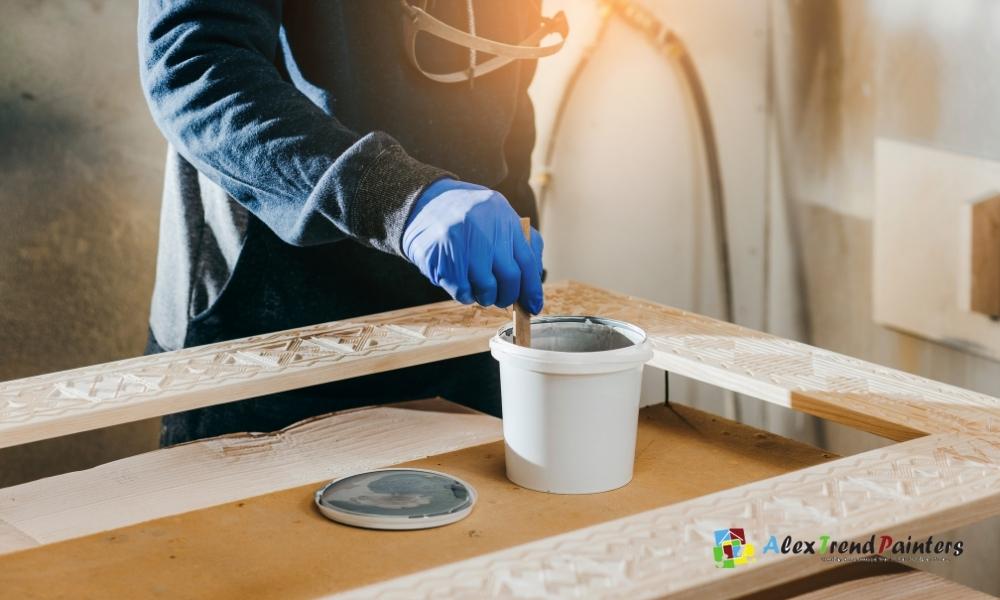Leading coat: the specialist guide to painting your house completely– from walls to floorings to radiators
Paint sales are up, however it needs to be utilized thoroughly if you want to alter your home for the better. Here is how to prepare, continue and get your preferred surface
Over the course of the past year you may have given idle idea to repainting all or part of your home. In lockdown, you might have decided now is the time. If so, you are not alone: paint companies are still delivering and sales are vigorous. Is this really the time to embark on such a task? And can you make a success of it, even if you have never ever done it before? We asked the specialists the best method to tackle it.
Before you start
Fortunately is, you can conserve a great deal of cash by painting your own home, due to the fact that labour represent most of decorating expenses. The problem is, there’s a factor painters are pricey. Painting is difficult.
The most significant error first-timers make is thinking too huge, according to Joa Studholme, author of How to Colour and decorate manager for the paint company Farrow & Ball. “My main piece of recommendations is to start small,” she says. “If you have a small hall, that can be an excellent place to start. There you can indulge your dreams of doing something rather strong and vibrant, which might be something you’re feeling you want to do right now, however then you do not need to look at it all day.”
Painting a whole room will certainly keep you busy, but if you are new to it, you most likely will not discover it terribly healing. “I do it where I think: ‘Oh, I’m gon na paint this, and it’s gon na be really soothing,'” says Studholme, “And, actually, painting is stressful. Smaller things are much better to do.” For beginners, she suggests beginning with your front door, or the legs of a table. “Paint the inside of a cupboard in a jolly colour which will make you smile every time you open it,” she states. When you have some concept of what it entails, you can proceed to a space.

Selecting colours
Lockdown might appear like fertile ground for ill-advised decisions, but Edward Bulmer, an interior designer and head of the Edward Bulmer Natural Paint company, states there may never ever be a much better time to choose colours. “If you consider it, it’s not often that we can ponder our spaces at all times of day,” he states, “and in varying weather conditions, and probably with full-on use, if you have actually got your family around.”
You can still purchase sample pots from lots of business, including Bulmer’s and Farrow & Ball (delivery times might be a bit longer, however none people is going anywhere). Instead of applying it to the wall, paint a generous piece of card– A5 or larger– or a bit of old wallpaper. “Then place it against the wall round the space and take a look at it in different lights,” states Studholme. “You may feel like a best idiot doing it, but that’s the best method to gauge how it’s going to look.”
If you do not know where to begin, attempt being led by the colours of other surfaces in the space: floors, worktops, tiles, any big bits of furnishings. “Some decision that’s currently out of your hands,” states Bulmer. Deal with what you’ve got.
Supplies and tools
At the minimum you will require a scraper, masking tape, some sandpaper, filler, ample dust sheets, a good brush or two, and a roller and tray. “We advise a medium stack roller, not a foam roller,” states Bulmer. “It will help the paint lay a bit more like it would with a brush.” As for paint, the quantity you require differs depending upon the type, however 5 litres of emulsion will cover around 60 square metres. Emulsion is for walls and ceilings; eggshell for woodwork. Low-cost paint is most likely a false economy, since it will not go as far. “One of the expensive active ingredients in paint is titanium dioxide, the standard white pigment,” says Bulmer. “Normally, to make a paint more affordable you utilize less of that, so you’ll have less coverage.”
Getting ready
Professional painters spend far longer prepping a space than they do painting it. Scrape away any loose old paint. Sand to develop a secret (an adhesive surface) for the new paint.
The ceiling
If you are doing the ceiling, that need to be done initially; you can get up there with either a ladder or a roller on a pole. In advance, paint round the edges where the ceiling fulfills the wall or any architectural functions, using a small brush.
The walls
Start by “cutting in” the top edge where the wall satisfies the ceiling, thoroughly, with a brush, by eye. Do the same along any woodwork edges (you can be a bit less accurate here, since you are painting the woodwork later on). If this part sounds overwhelming, Studholme has an easy option that likewise happens to be fashionable: paint whatever– walls, ceilings, woodwork– the exact same colour. “It’s so much easier for home decorating and it makes the room look larger,” she states. It’s by no implies an extreme concept. “There’s historical precedent for it. Georgian spaces were frequently painted in one colour.”
When it comes to rolling your walls, the primary guidance is to keep going. “That’s the single risk, actually,” says Bulmer. Paint a single coat in one go, and let it dry overnight.
Woodwork
This is where genuine care is required: painting windows, door frames and skirting boards with great straight edges and without getting any drips or splatters on your newly painted walls. Not once but 3 times, since you will need guide plus 2 leading coats. “One technique is to paint the spindles of your stair balustrade dark,” states Studholme.
Floors
” I enjoy a painted floor,” says Studholme. “The rule with painted floorings is that they constantly look much lighter than you anticipate.
You will need a robust, hard-wearing paint. There are specialist floor paints, and some professionals even advise boat paint. You also need to think about what part of the space you are going to end up in when you complete, or you might literally paint yourself into a corner.
Radiators
The factory surface of a modern radiator does not need to be painted but if it is noticeable, you might wish to conceal it. In that case, a light sanding and an oil undercoat, followed by “the eggshell version of the wall” should be enough, says Bulmer. There is such a thing as radiator paint, however it may not be available in the colour you need. The radiator should be cold when you paint it and will require to remain off for 24 hr afterwards, so the weather forecast might be a consideration.
Ending up
Studholme suggests you make a record of all the finishes and colours you have actually utilized in case you require to repaint any bits later on once you have completed the project. Store remaining paint in a cool, dry, frost-free location, prepared for touching-up or any other little projects. “Last night, I got on a ladder and painted a square round the mirror above our fireplace,” she states. “I thought it might be great to have a bit of colour there. It took me probably eight minutes to do it, and I can paint it out again tomorrow if I do not like it.”
“I do it where I think: ‘Oh, I’m gon na paint this, and it’s gon na be actually calming,'” states Studholme, “And, in fact, painting is demanding. “Paint the inside of a cabinet in a jolly colour and that will make you smile every time you open it,” she states. “One trick is to paint the spindles of your stair balustrade dark,” says Studholme.” I enjoy a painted flooring,” says Studholme. There are specialist flooring paints, and some professionals even recommend boat paint.
* NOTE: Combine the our painters dublin service with house painting, Exterior & Interior Painting, commercial painting, furniture spray painting,wallpapering, plastering services and benefit from our discounts. Or just simply contact us for a free quote. Please also have a look at our amazing testimonials and gallery. Our sitemap, about us and blog. Areas we cover.
Areas We Cover (AlexTrendPainters.ie)
Related Articles
Learn More About Painting and Painters

